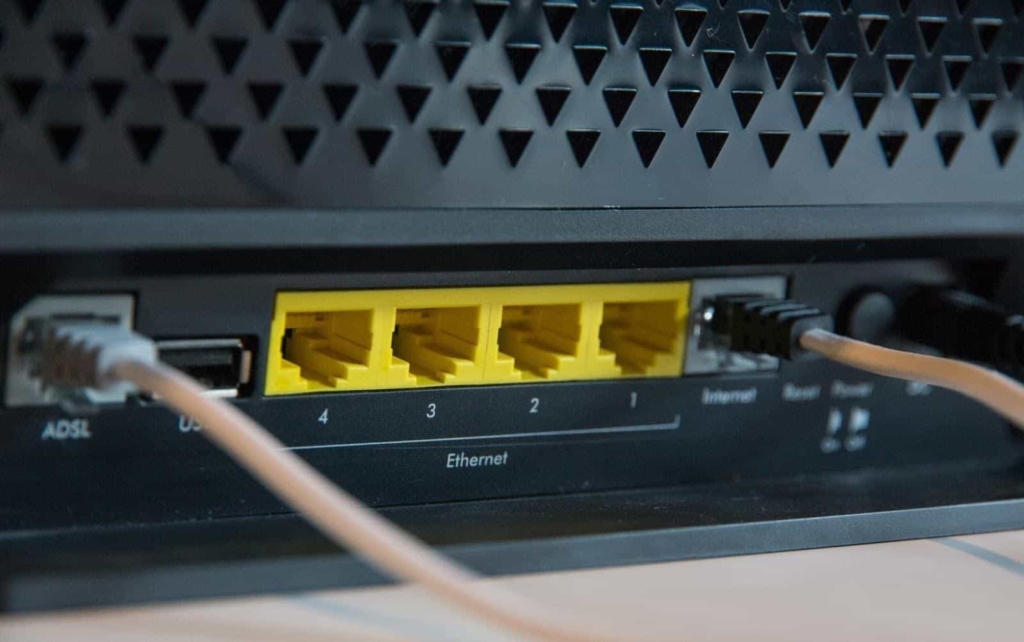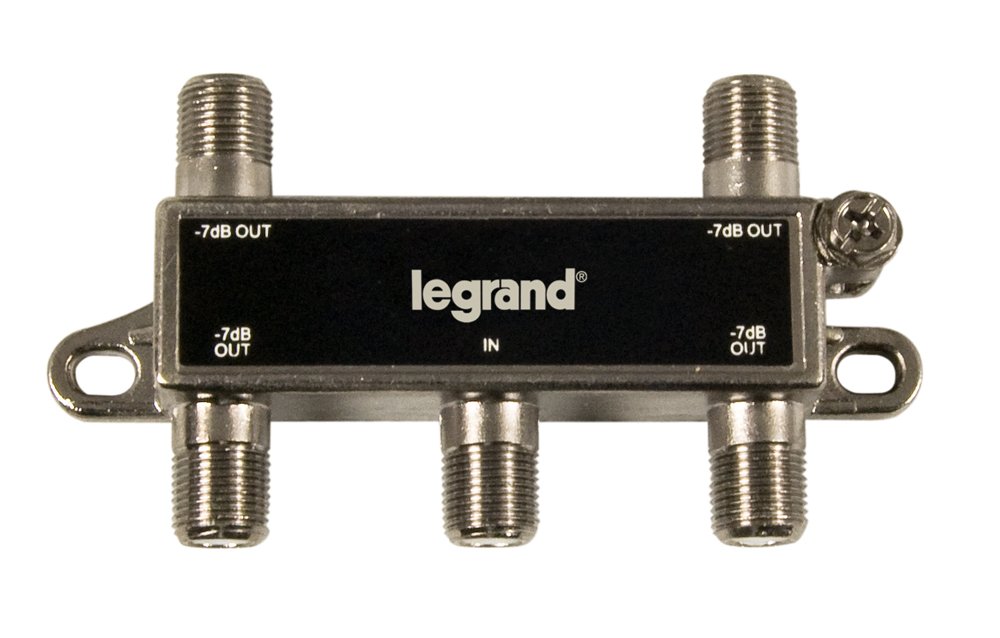Are you using the right ethernet cable for your IT network? The type of cable infrastructure you use can make a significant difference, and it’s essential to choose the right one, especially if the choice is between a cat 5 vs cat 6.
Many ethernet cables might look the same, but it’s what’s inside that counts; they all handle internet speeds, bandwidth, and crosstalk in a different way. Let’s talk about the different types of ethernet cables and identify which one is best for your internet service.
Related: Outdoor Power Stations
What is a Cat5 Cable?
The regular Cat5 cables were standard in most households before high-speed internet plans were widely available. As the availability of higher internet speeds continues to rise, Cat5 cables have become mostly obsolete. Even if you didn’t have high-speed internet, a Cat5 cable wouldn’t be your first choice; because much better options are available, it’s difficult to find new Cat5 cables for sale.
- Price check (7-foot patch cable): N/A — they are hard to find new.
- Cat5 cables are good if you already own one, and your internet speed is less than 100 Mbps.
- When to upgrade to a Cat5e: If you need a new cable, Cat5e’s are easier to find, affordable, and support faster speeds if you ever decide to upgrade your internet.
Do you want to learn more about how important using the right equipment is for your home or business? C&C Technology Group has you covered!
Cat5e Cables
Cat5e (enhanced) cables are the current base standard for a budget ethernet cable. They can support up to 1,000 Mbps and are designed to reduce crosstalk to get a more consistent connection. Because they are more affordable than the next tier of ethernet cables and support high speeds, Cat5e cables are the most common version that most people use. They are getting closer and closer to obsolescence as the next tier gains popularity.
- Price check (5-foot patch cable): Click here
- Cat5e cables are good if you are looking for an affordable option that will get the job done.
- When to upgrade to a Cat6: If you want the option of higher bandwidth and a shielded cable to reduce interference and crosstalk.
What is a Cat6 Cable?
Cat6 cables support the same internet speeds as a Cat5e but offer more than double the bandwidth. Higher bandwidth reduces download and upload times, especially when transferring files via a Cat6 cable. Some Cat6 cables are shielded, meaning that there is a protective barrier inside the cable that reduces crosstalk and interference.
- Price check (7-foot patch cable): Click here
- Cat6 cables are good if your internet speeds are under 1,000 Mbps and you want higher bandwidth capabilities.
- When to upgrade to a Cat6a: If you want the option of higher bandwidth and a shielded cable to reduce interference and crosstalk.
Cat6a Cables
Cat6a (augmented) cables offer a massive jump in internet speed and bandwidth over the other options; they support up to 10,000 Mbps and 500MHz. All Cat6a cables feature shielding to almost entirely eliminate crosstalk. Cat6a cables deliver a reliable, fast connection, and you probably wouldn’t need to upgrade for a long time. They support the faster speeds of fiber-optic internet that are becoming more common.
- Price check (7-foot patch cable): Click here
- Cat6a cables are good if your internet speeds are over 1,000 Mbps, and you want a cable that won’t be outdated anytime soon.
| Cable | Maximum Speed | Maximum Bandwidth |
| Cat5 | 100 Mbps | 11 MHz |
| Cat5e | 1,000 Mbps | 100 MHz |
| Cat6 | 1,000 Mbps | 250 MHz |
| Cat6a | 10,000 Mbps | 500 MHz |
Cat 5 vs. Cat 6: Pros and Cons

Related: Tech Tip: PowerWise Cable
Bandwidth
Cat5e and Cat6 cables both support speeds of up to 1,000 Mbps, which is sufficient for most internet connections, but the main difference is in the bandwidth.
Higher bandwidth means faster data transfer, and Cat6 cables operate on frequencies up to 250 MHz, compared to the Cat5e’s 100 MHz support.
You can think of it like a two and four-lane highway: you drive the same speed on both, but the 4-lane road handles much more traffic in the same amount of time.
Cost
Not to be taken lightly is cost. It’s obvious that there is a cost escalation the higher that you go in performance. Cat 5 will be you lowest cost and will increase as you move to Cat 5e, Cat 6, Cat 6a and beyond. You can check out some budget numbers at these links.
Crosstalk
Crosstalk is the other primary difference when comparing the Cat 5 vs Cat 6 cables. Cat 6 cables provide lower interference (Near-End Crosstalk) in transmission and improve the Equal-Level Far-End Crosstalk, Insertion Loss, and Return Loss. The result of these improved crosstalk capabilities is fewer errors, less system noise, and faster data transmission rates.
Other Types of Cat Cables
Let’s look at a quick overview of the Cat7 category of cables for the sake of being thorough; most of the time, you won’t need anything more than a Cat6a cable has to offer.
Cat7 Cables
Cat7 cables offer little more than a Cat6a other than slightly higher bandwidth. The Cat7 cable supports 600 MHz of bandwidth, while the Cat6a supports 500 MHz; this does allow for slightly faster data transfers but doesn’t make a massive difference. The Cat7 standard is not officially recognized in the Americas. However the European Union has seen wide adoption of Cat7 and Cat7a.
- Average price (12-foot cable): $15-$25
- Cat7 cables are good if your internet speeds are over 1,000 Mbps, and you want higher bandwidth capabilities.
- When to upgrade to a Cat7a: If you want the highest bandwidth available.
Cat7a Cables
Cat7a cables are the highest-performing ethernet cords available. They support the same speeds as Cat6a and Cat7 cables but have a maximum bandwidth of 1,000 MHz — double that of the Cat6a. That’s much more than the average user requires, but it is the best option if you need lots of bandwidth.
- Average price (12-foot cable): $25-$35
- Cat7a cables are good if you want the most bandwidth possible and don’t mind spending a little more on your ethernet cable.
Choosing the Right Ethernet Cable

There are a few other factors to consider other than crosstalk and supported speeds. Here are some additional features to think about when choosing an ethernet cable:
- The length: Understand that you have a maximum of 300ft available to stay with in the standards and guarantee performance. Anything longer and you run the risk of high bit error rate or complete failure.
- Copper cables: Ethernet cables come in pure copper or cooper-clad aluminum (CCA.) Pure copper gives you a better connection than CCA; it might be a little more expensive, but you’ll get a better quality connection. CCA with work for at home applications, but businesses and enterprise should always demand the quality of solid copper cables.
- Talk to your installer: Your installer will likely bring cable with them to the installation site. Make sure to ask them about the cable they are planning to use; you can always request a better one if it’s not the best for your connection.
Are you looking for a better setup for your home or business? Get in touch with C&C Technology Group today!
Related: Visibility in Data Centers
Last Updated on April 20, 2023 by Josh Mahan



![Image Network & cable testers [buyer’s guide] | c&c technology group](https://cc-techgroup.com/wp-content/uploads/2021/02/image.jpeg)
